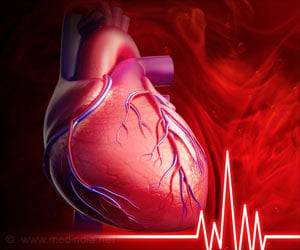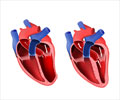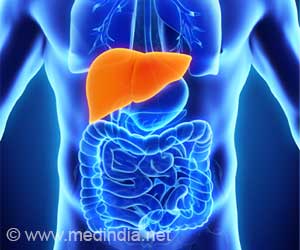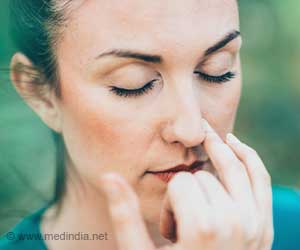Stem cells derived from adult human heart cells were incorporated into a matrix that grew into a patch to be used in patients after a heart attack.
Highlights
- Using laser-based 3D bio-printing techniques, stem cells derived from adult human heart cells were incorporated into a matrix.
- This heart patch when implanted over the //dead muscle, provides more strength for contractions.
- Also, the heart patch is large enough to cover the affected tissue.
The heart cannot regenerate itself after a heart attack, unlike some human organs. The dead muscle is often replaced by scar tissue that can no longer transmit electrical signals or contract, both of which are necessary for smooth and forceful heartbeats.
The end result is a disease commonly referred to as heart failure that affects over 12 million patients worldwide. New therapies, such as the one being developed by Shadrin and his advisor Nenad Bursac, professor of biomedical engineering at Duke, are needed to prevent heart failure and its lethal complications.
Current clinical trials are testing the tactic of injecting stem cells derived from bone marrow, blood or the heart itself directly into the affected site in an attempt to replenish some of the damaged muscle. While there do seem to be some positive effects from these treatments, their mechanisms are not fully understood. Fewer than one percent of the injected cells survive and remain in the heart, and even fewer become cardiac muscle cells.
Heart patches, on the other hand, could conceivably be implanted over the dead muscle and remain active for a long time, providing more strength for contractions and a smooth path for the heart's electrical signals to travel through. These patches also secrete enzymes and growth factors that could help the recovery of damaged tissue that hasn't yet died.
Heart Patch With Stem Cells That Facilitate Wound Healing
This is the first human heart patch to meet both criteria. "Creating individual cardiac muscle cells is pretty commonplace, but people have been focused on growing miniature tissues for drug development," said Bursac. "Scaling it up to this size is something that has never been done and it required a lot of engineering ingenuity."
Various types of heart cells can be grown from the stem cells: cardiomyocytes, the cells responsible for muscle contraction; fibroblasts, the cells that provide a structural framework for heart tissue; and endothelial and smooth muscle cells, the cells that form blood vessels. The researchers place these cells at specific ratios into a jelly-like substance where they self-organize and grow into functioning tissue.
The results improved on the researchers' previous patches, which were one square centimeter and four square centimeters. They successfully scaled up to 16 square centimeters and five to eight cells thick. Tests show that the heart muscle in the patch is fully functional, with electrical, mechanical and structural properties that resemble those of a normal, healthy adult heart.
"This is extremely difficult to do, as the larger the tissue that is grown, the harder it is to maintain the same properties throughout it," said Bursac. "Equally challenging has been making the tissues mature to adult strength on a fast timescale of five weeks while achieving properties that typically take years of normal human development."
Vascularized Heart Patch
Bursac and Shadrin have already shown that these cardiac patches survive, become vascularized and maintain their function when implanted into mouse and rat hearts. For a heart patch to ever actually replace the work of dead cardiac muscle in human patients, however, it would need to be much thicker than the tissue grown in this study.
For patches to be grown that thick, they need to be vascularized so that cells on the interior can receive enough oxygen and nutrients. Even then, researchers would have to figure out how to fully integrate the heart patch with the existing muscle.
"Full integration like that is really important, not just to improve the heart's mechanical pumping, but to ensure the smooth spread of electrical waves and minimize the risk of arrhythmias," said Shadrin. "We are actively working on that, as are others, but for now, we are thrilled to have the 'size matters' part figured out," added Bursac.
Reference
- Ilya Y. Shadrin, Brian W. Allen, Ying Qian, Christopher P. Jackman, Aaron L. Carlson, Mark E. Juhas & Nenad Bursac. 'Cardiopatch platform enables maturation and scale-up of human pluripotent stem cell-derived engineered heart tissues.' Nature Communications (2017). doi:10.1038/s41467-017-01946-x.
Source-Medindia
















